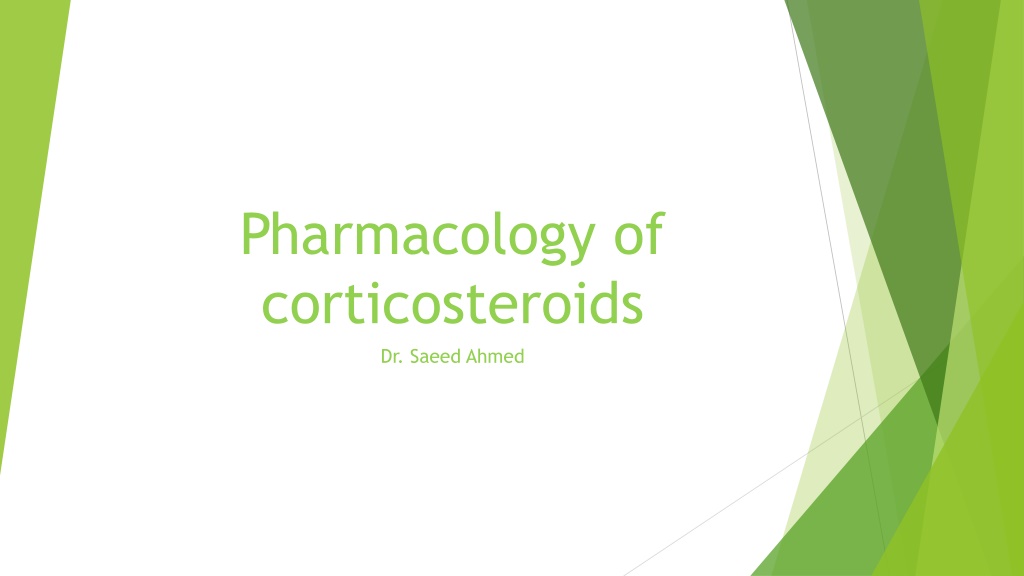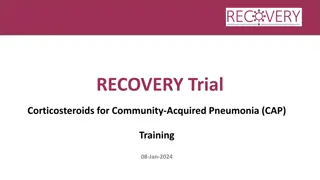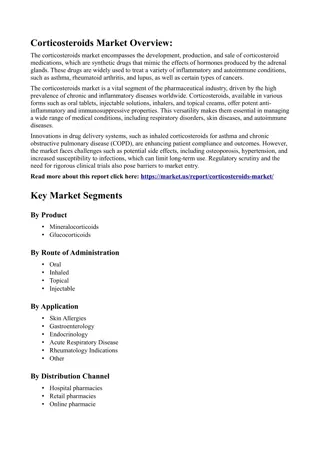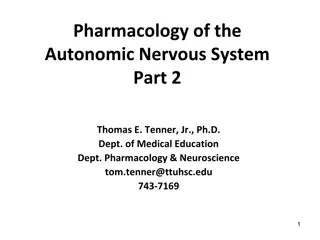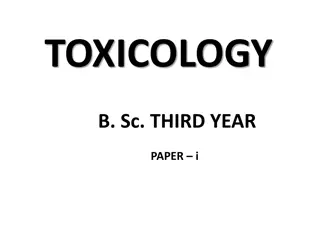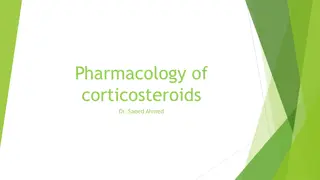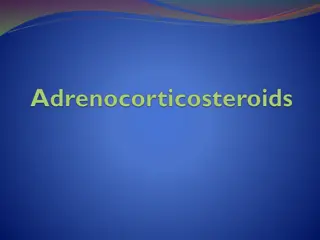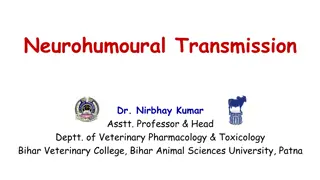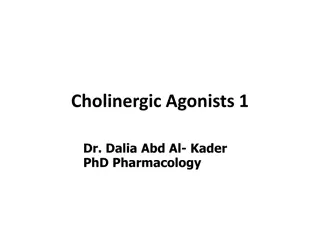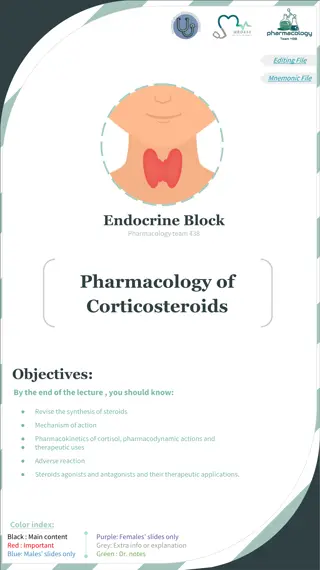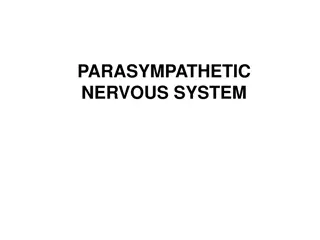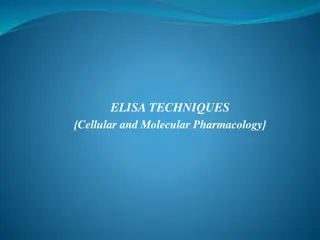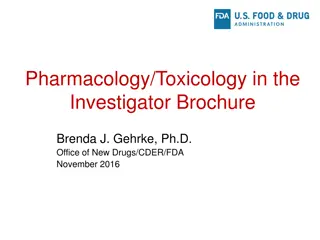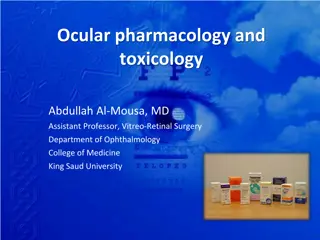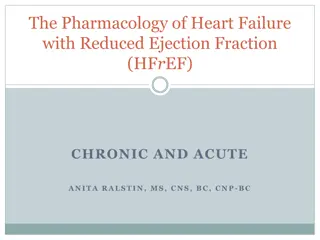Understanding Corticosteroids: Pharmacology and Effects
Corticosteroids, including glucocorticoids and mineralocorticoids, play vital roles in intermediary metabolism, immune responses, and inflammation regulation. They bind to specific receptors in the cell, entering the nucleus to influence gene transcription and protein production. These hormones have diverse effects on organs and tissues, impacting metabolism, catabolism, and various physiological processes. Glucocorticoids stimulate gluconeogenesis and fat deposition, while also causing muscle protein breakdown and bone catabolism. Understanding the pharmacodynamics and effects of corticosteroids is essential in clinical practice.
Download Presentation

Please find below an Image/Link to download the presentation.
The content on the website is provided AS IS for your information and personal use only. It may not be sold, licensed, or shared on other websites without obtaining consent from the author. Download presentation by click this link. If you encounter any issues during the download, it is possible that the publisher has removed the file from their server.
E N D
Presentation Transcript
Pharmacology of corticosteroids Dr. Saeed Ahmed
The Corticosteroids are steroid hormones produced by the adrenal cortex. They consist of two major physiologic and pharmacologic groups 1. Glucocorticoids 2. Mineralocorticoids
1. Glucocorticoids: Which have important effects on intermediary metabolism, catabolism, immune responses and inflammation. 2. Mineralocorticoids: Which regulate sodium and potassium reabsorption in the collecting tubules of the kidney
Pharmacodynamics: A. Mechanism of Action: Corticosteroid is present in the blood bound to the corticosteroid binding globulin(CBG) and enters the cell as the free molecule. The intracellular receptor is bound to the stabilizing proteins, including heat shock protein 90(Hsp90) and several others(X). When the complex binds a molecule of steroid, the Hsp90 and associated molecules are released.
The Steroid receptor complex enters the nucleus as a dimer, binds to the glucocorticoid response element(GRE) on the gene, and regulates gene transcription by RNA polymerase2 and associated transcription factors. The resulting mRNA is edited and exported to the cytoplasm for the production of protein that brings about the final hormone response
B. Organs and tissue effects Metabolic effects: Glucocorticoids stimulate gluconeogenesis, as a result Blood glucose rises Insulin secretion is stimulated Lipolysis and lipogenesis are stimulated With a net increase of fat deposition in certain areas (e.g, the face(moon facies) and shoulder and back(buffalo hump)
2. Catabolic effects: Glucocorticoids cause muscle protein catabolism Lymphoid and connective tissue fat and skin undergo wasting. Catabolic effects on bone lead to osteoporosis In children growth is inhibited
3. Immunosuppressive effects: Glucocorticoids inhibit cell mediated immunologic functions, especially dependent on lymphocytes. Glucocorticoids do not interfere with the development of normal acquired immunity but delay rejection reactions in patients with organ transplants.
4. Anti inflammatory effects: Glucocorticoids have important effects on the distribution and function of leukocytes These drugs increase neutrophils and decrease lymphocytes, eosinophils, basophils and monocytes. The migration of leukocytes is also inhibited
5.Other effects: Glucocorticoids such as cortisol are required for normal renal excretion of water loads. CNS: When given in large doses these drugs may cause profound behavioral changes. GIT: Large doses also stimulate gastric acid secretion and decrease resistance to ulcer formation
Important Glucocorticoids: Cortisol: The major natural glucocorticoid is cortisol(hydrocortisone). The physiologic secretion of cortisol is regulated by adrenocorticotropin(ACTH) and varies during the day(circadian rhythm). The peak occurs in the morning and the trough occurs about midnight
Pharmacokinetics: Given orally ,cortisol is well absorbed from GIT Cortisol in the plasma is 95% bound to CBG It is metabolized by the liver and has short duration of action compared with the synthetic congeners. It diffuses poorly across normal skin and mucous membranes
The cortisol molecule also has a small but significant salt retaining (mineralo corticoid) effect. This is an important cause of hypertension in patients with cortisol secreting adrenal tumor or a pituitary ACTH secreting tumor(cushing s syndrome).
2. Synthetic Glucocorticoids Large number are available for use; prednisone and its active metabolite prednisolone, dexamethasone,triamcinolone, their properties(compared with cortisol) include longer half life and duration of action, reduce salt retaining effect and better penetration of lipid barriers for topical activity
Beclomethasone and budsonide have been developed for use in asthma and other condition in which good surface activity on mucous membrane or skin is needed and systemic effects are to be avoided These drugs rapidly penetrate the airway mucosa but have very short half lives after they enter the blood, so that systemic effects and toxicity are greatly reduced.
Clinical uses: A. Adrenal disorders 1. Addison s disease(chronic adrenal cortical insufficiency) 2. Acute adrenal insufficiency associated with life threatening shock, infections or trauma 3. Congenital adrenal hyperplasia (in which synthesis of abnormal forms of corticosteroids are stimulated by ACTH.
B. Non adrenal disorders: 1. Allergic reactions(e.g; bronchial asthma, angioneurotic edema, drug reactions, urticaria, allergic rhinitis) 2. Collagen vascular disorders (e.g; Rheumatoid arthritis, systemic lupus erythematosus, giant cell arteritis, poly myositis,mixed connective tissue syndrome). 3. Organ transplants (prevention and treatment of rejection immunosuppression)
4. Gastrointestinal disorders( inflammatory bowel disesase, non tropical sprue). 5. Hematologic disorders( leukemia, multiplemyeloma, acquired hemolytic anemia, acute allergic purpura) 6. Infections( acute respiratory distress syndrome, sepsis) 7. Neurologic disorders(cerebral edema after brain surgery to minimize cerebral edema, multiple sclerosis
8. Pulmonary diseases( e.g.; aspiration pneumonia, bronchial asthma, sarcoidosis 9. Thyroid diseases( malignant exophthalmos, subacute thyroiditis) 10. Renal disorders(nephrotic syndrome) 11. Miscellaneous ( hypercalcaemia, mountain sickness)
Toxicity (Adverse effects) Cushing s syndrome(iatrogenic, by higher doses more than 100mg hydrocortisone daily for more than 2 weeks characterized by moon shape face and buffalo hump) Increased growth of fine hair on face ,thighs and trunk. Myopathy, muscle wasting, thinning of skin, Diabetes Mellitus
Osteoporosis and aseptic necrosis of the hip. wound healing is impaired In general patients treated with corticosteroids should be on high protein and potassium-enriched diets. B. Other complications Peptic ulcer Acute psychosis, depression Subcapsular cataracts
Growth suppression Hypertension C. Adrenal suppression Methods for minimizing these toxicities include Local application(e.g ,aerosol for asthma) Alternate day therapy(to reduce pituitary suppression) Tapering the dose soon after achieving a therapeutic response
To avoid adrenal insufficiency in patients who have had long term therapy, additional stress doses may need to be given during serious illness, or before major surgery
Mineralocorticoids: A. Aldosterone: The Major natural mineralocorticoid in human is aldosterone. The secretion of aldosterone is regulated by ACTH and by the renin-angiotensin system and is very important in the regulation of blood volume and blood pressure. Aldosterone has short half life and little glucocorticoid activity.
Mechanism of action: is same as that of glucocorticoids Fludrocortisone: it is a mineralocorticoid has a long duration of action and significant glucocorticoid activity Fludrocortisone is favored for replacement therapy after adrenalectomy and in other conditions in which mineralocorticoid therapy is needed
Corticosteroid Antagonists: A. Receptor Antagonists Spironolactone and eplerenone, antagonists of aldosterone at its receptor. Mifepristone: is a competitive inhibitor of glucocorticoid receptors as well as progesterone receptors and useful in the treatment of Cushing's syndrome
B. Synthesis inhibitors: Aminogluthimide, Metyrapone and ketoconazole Clinical uses: Adrenal cancer, when surgical therapy is impractical or unsuccessful because of metastasis.
Ketoconazole(anti fungal): Mechanism of Action: It inhibits the cytochrome p450 enzymes necessary for the synthesis of all steroids and is used in a no. of conditions in which reduced steroid level are desirable 1.Adrenal carcinoma 2. Hirsutism 3.Breast cancer 4. Prostate cancer
Aminogluthemide: It blocks the conversion of cholesterol to pregnelone Inhibits the synthesis of all hormonally active steroids. Clinical uses: Adrenocortical cancer(steroid producing tumor) in conjuction with other drugs.
